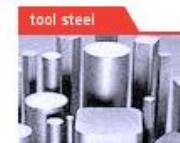 Add My Company
Add My Company
Sign In

In metallurgy, stainless steel is defined as an iron-carbon alloy with a minimum of 10.5% chromium content.[1] The name originates from the fact that stainless steel does not stain, corrode or rust as easily as ordinary steel. This material is also called corrosion resistant steel when it is not detailed exactly to its alloy type and grade, particularly in the aviation industry. As such, there are now different and easily accessible grades and surface finishes of stainless steel, to suit the environment to which the material will be subjected to in its lifetime. Common uses of stainless steel are the everyday cutlery and watch straps.Stainless steels have higher resistance to oxidation (rust) and corrosion in many natural and man made environments; however, it is important to select the correct type and grade of stainless steel for the particular application.High oxidation resistance in air at ambient temperature is normally achieved with additions of a minimum of 13% (by weight) chromium, and up to 26% is used for harsh environments.[2] The chromium forms a passivation layer of chromium(III) oxide (Cr2O3) when exposed to oxygen. The layer is too thin to be visible, meaning the metal remains lustrous. It is, however, impervious to water and air, protecting the metal beneath. Also, this layer quickly reforms when the surface is scratched. This phenomenon is called passivation and is seen in other metals, such as aluminium and titanium. When stainless steel parts such as nuts and bolts are forced together, the oxide layer can be scraped off causing the parts to weld together. When disassembled, the welded material may be torn and pitted, an effect that is known as galling.Nickel also contributes to passivation, as do other less commonly used ingredients such as molybdenum and vanadium.
For more information on Stainless Steel talk to West Yorkshire Steel Co Ltd
Enquire Now
More products
List your company on FindTheNeedle.

